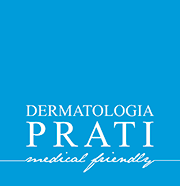By warts we mean benign (noncancerous) growths of the skin that can affect different parts of the body and take various forms. They are caused by a virus, are contagious and very common-in fact, warts can affect anyone, although they are more common in the very young.
Let us now see what are the most common types of warts and what are the manifestations of this skin disorder.
What you need to know about warts
From the definition of a wart to treatments, here is a wealth of information for managing warts on the body.
What are
What are warts? Let’s go on to answer this simple but fundamental question, before moving on to symptomatology and possible remedies.
As we have mentioned, warts are benign skin growths caused by a viral infection, linked to one of the more than seventy strains of papilloma virus thataffect humans(called HPV, from Human Papilloma Virus).
Warts are quite common and generally not dangerous. However, they are very contagious, and treating them in a timely manner is critical so as not to pass this disorder on to others.
Classification and types
We continue to explain what warts are by examining the various types of this disorder. In fact, there are different types of warts:
- Common warts – These types of warts usually occur on the fingers, hands, knees and elbows. They appear as small, hard outgrowths, rounded in shape and usually grayish-brown in color. They are rough to the touch and have a series of black dots on the inside
- Vulgar warts or leeks – They have a yellowish-gray complexion and irregular surface, due to the presence of so many ridges. They usually affect the backs of the hands and fingers and soles of the feet
- Plantar warts – Plantar warts can be very annoying because they affect the soles of the feet and sometimes the ankles as well. The wart on the foot does not develop outward like other types of warts, but due to the weight of the body is instead pushed inward while walking
- Flat warts-This type of wart is smooth to the touch and its top is flat. They are quite common in children and appear on the face, arms, knees, and hands, sometimes in clusters
- Mosaic warts – They appear as a kind of very closely spaced small white scabs. They can occur under the toes, but unlike plantar warts they are flatter and do not cause pain during movement
- Filiform warts – Warts of the face that usually form near the mouth, eyes and nose. They occur with an elongated shape and are usually the same color as the skin.
Causes and risk factors
Now that we have seen what warts are, let’s look in detail at causes and risk factors that fuel the chances of running into this disorder.
We can summarize the risk factors that expose us to warts in these points:
- Weakened immune defenses;
- Use of nail and body care products in common with other people. We talk about towels, scissors, callus removers, etc;
- Moisture accumulation, especially at foot level;
- Walking barefoot in swimming pools, gyms and locker rooms;
- Poor skin hygiene.
Transmission and care
As we mentioned when discussing what warts are, these are not usually dangerous, but very contagious. The virus is transmitted via direct or indirect contact with someone who has the lesion, especially if the risk conditions we described in the previous section are met.
Speaking of how to get rid of warts on the hands, feet, or any other area where they arise, it is appropriate to evaluate among several methods, each functional to the type of wart that has contracted.
To get an accurate diagnosis, it is best to consult a dermatology specialist who, through observation, will be able to recognize the type of wart and the right solution for the case in question.
Among the possible remedies to get rid of warts, we mention cryotherapy, which is a treatment that makes use of liquid nitrogen to freeze the wart. Then there are many other pharmacological remedies, for example, based on salicylic acid and lactic acid.
In any case, on examination, the dermatologist will be able to explain the best removal technique, depending on the case.
On what warts are and how they occur, we have said just about everything. If you think you have a wart and don’t know how to solve your problem, turn to us: our dermatology office is located in Rome, at 212 Via Cola di Rienzo.
To make an appointment, write to us at info@ or call 06 45471658

